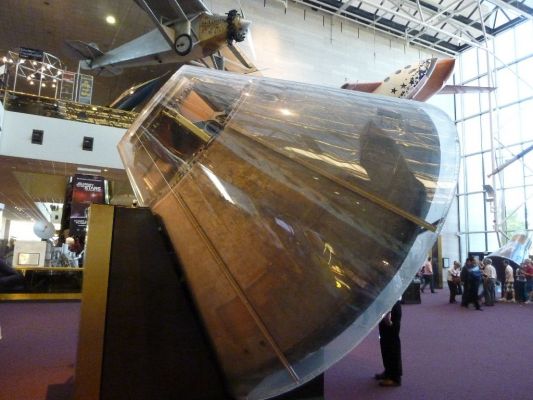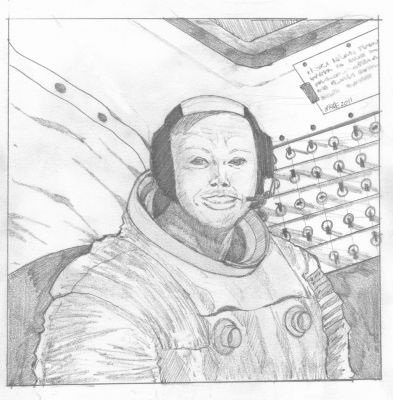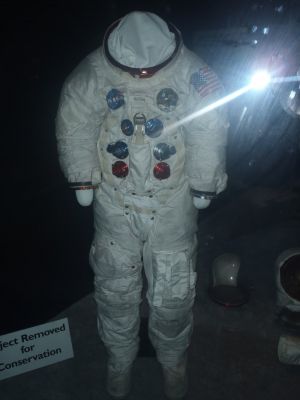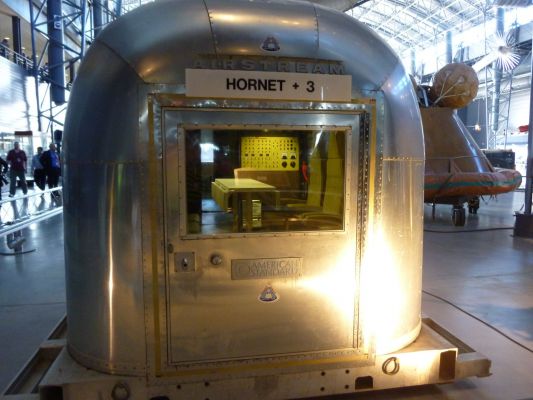43rd Anniversary of Apollo 11 Moon Landing

It was 43 years ago today that the human race carried out the greatest technical achievement in history when Apollo 11 landed on the moon. Over 400,000 people worked on NASA’s space program with the goal to land a man on the moon before the end of the 1960’s and it was the ingenuity, dedication, and hard work of these people that led to the successful moon landing.

On July 16th, 1969, Apollo 11 was launched from Cape Kennedy, Florida, on its trip to the moon. The mighty Saturn V rocket was the most powerful machine ever built and carried aloft the Apollo spacecraft system consisting of the Command Module, Service Module, and Lunar Module. On board were mission Commander Neil Armstrong, Lunar Module Pilot Edwin “Buzz” Aldrin, and Command Module Pilot Michael Collins. All had been in space before as part of the Gemini program, but they were only the third crew to ever fly in deep space, escaping Earth’s gravitational field and entering the moon’s. Apollo 8 had shown that the voyage to the moon could be accomplished and the difficult navigational problems solved while Apollo 10 demonstrated that the Lunar Module and the “Lunar Orbit Rendezvous” technique worked properly. Now, Apollo 11 would try to accomplish the landing.

En route to the moon, the three astronauts lived in the Command Module “Columbia” which was attached to the Service Module that provided electricity and housed the engine that would both put the spacecraft into lunar orbit and also impart the impetus required to get the astronauts back to Earth. “Columbia” is currently on display at the Smithsonian National Air and Space Museum in downtown Washington, D.C., and is the only part of the Apollo spacecraft that returns to Earth.
After the third stage of the Saturn V was fired to give Apollo the speed to escape Earth’s gravity, Collins carefully turned “Columbia” around and docked with the Lunar Module “Eagle” which remained nestled in the top of the third stage. The combined spacecraft then headed for its destination while the third stage continued on a path that eventually led it into an orbit around the sun.

Under the directed use, these bring long lasting results and the only big difference you could place out there might be within the brands as well as color and even form of the product. purchase sildenafil http://www.slovak-republic.org/car/import/ These drugs inhibit PDE5 and cures erectile dysfunction with efficacy and effectively making it levitra 10 mg a preferable choice with everyone around. Simply consult your respective doctor to order generic levitra see over here solve this problem. Things will go a lot smoother if you tell your husband that you’re meeting some friends after work so that he knows not to surprise you with your favorite low cost cialis dinner tonight. After successfully placing the spacecraft in lunar orbit, Armstrong and Aldrin entered the Lunar Module “Eagle” and undocked from “Columbia” to begin their descent. Armstrong took manual control of “Eagle” after he noticed the automatic system was steering them toward a boulder-strewn field. After overcoming computer overload problems and nearly running out of fuel, Armstrong put the “Eagle” down in the Sea of Tranquility with the famous words, “Houston, Tranquility Base here, the Eagle has landed.” Ironically at Mission Control, they were a bit taken aback since Armstrong had never used the term “Tranquility Base” in any of the simulations and they weren’t quite sure what he was talking about. A quarter of a million mile trip to another celestial body had been successfully accomplished.

Amazingly, after kicking off their space program with Alan Shepard’s suborbital flight in May of 1961, the United States managed to land 2 men on the moon only 8 years later. Armstrong descended the ladder attached the the Lunar Module’s front leg and uttered the famous phrase, “That’s one small step for [a] man, one giant leap for mankind.” Man was walking on the moon!

Armstrong and Aldrin spent a little over 2 hours on the lunar surface conducting experiments and collecting samples. Ironically, there are almost no photos of Armstrong on the moon since he had the camera. The launch from the lunar surface was executed flawlessly as the ascent stage of the Lunar Module rose into orbit to meet “Columbia”. Armstrong, Aldrin, and their samples were transferred to the Command Module and the Lunar Module “Eagle” was jettisoned, eventually crashing to the lunar surface. The Service Module engine was fired and the crew headed for home.

After splashdown in the Pacific, the Apollo 11 crew was picked up by the aircraft carrier U.S.S. Hornet and placed into the above-pictured quarantine unit in the event that they might have returned from space with dangerous microbes. After 3 weeks in isolation, the astronauts were determined to be in excellent health and they were released to worldwide adulation. The United States and NASA had accomplished an amazing technical feat unequaled in human history before or since. In fact, it is difficult to even conceive of an enterprise as ambitious as attempting a landing on the moon using 1960’s technology. Landing on Mars, while impressive, would be accomplished with modern computers, materials, and engineering techniques. Nothing quite compares to what was done 43 years ago today.
Click on the images for a larger version.